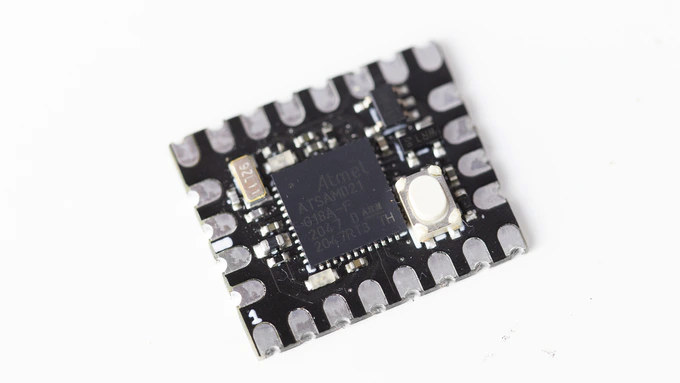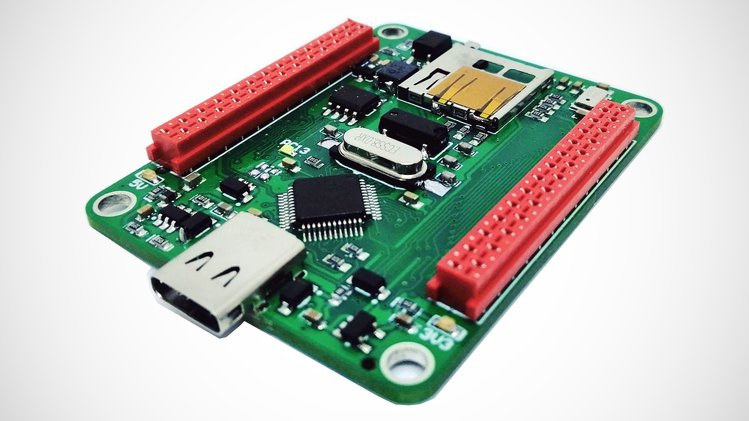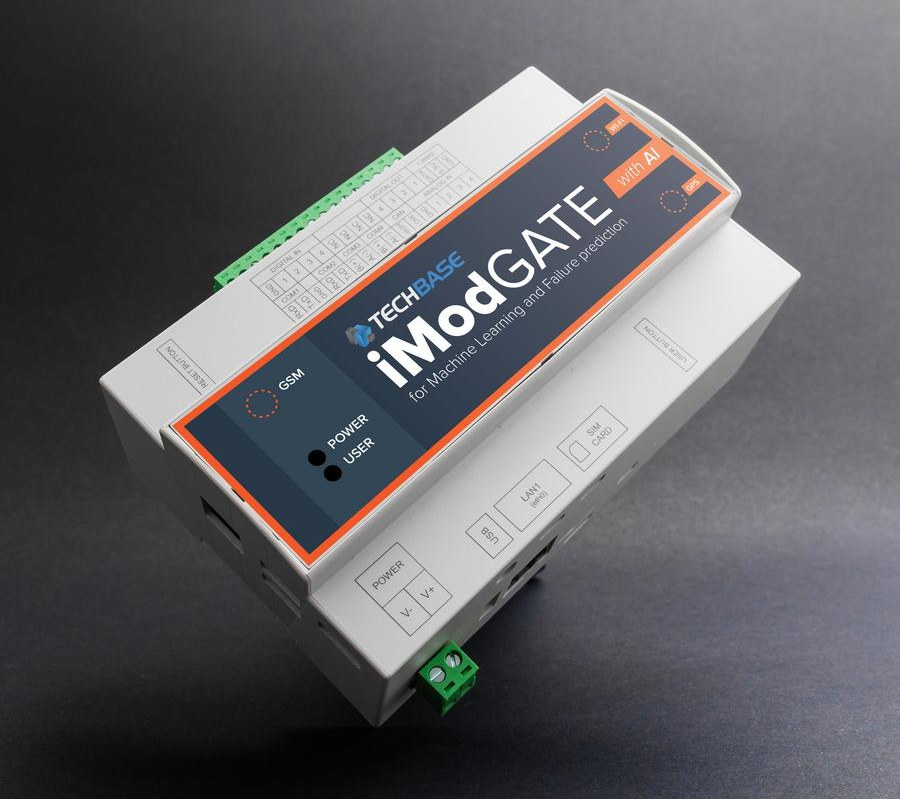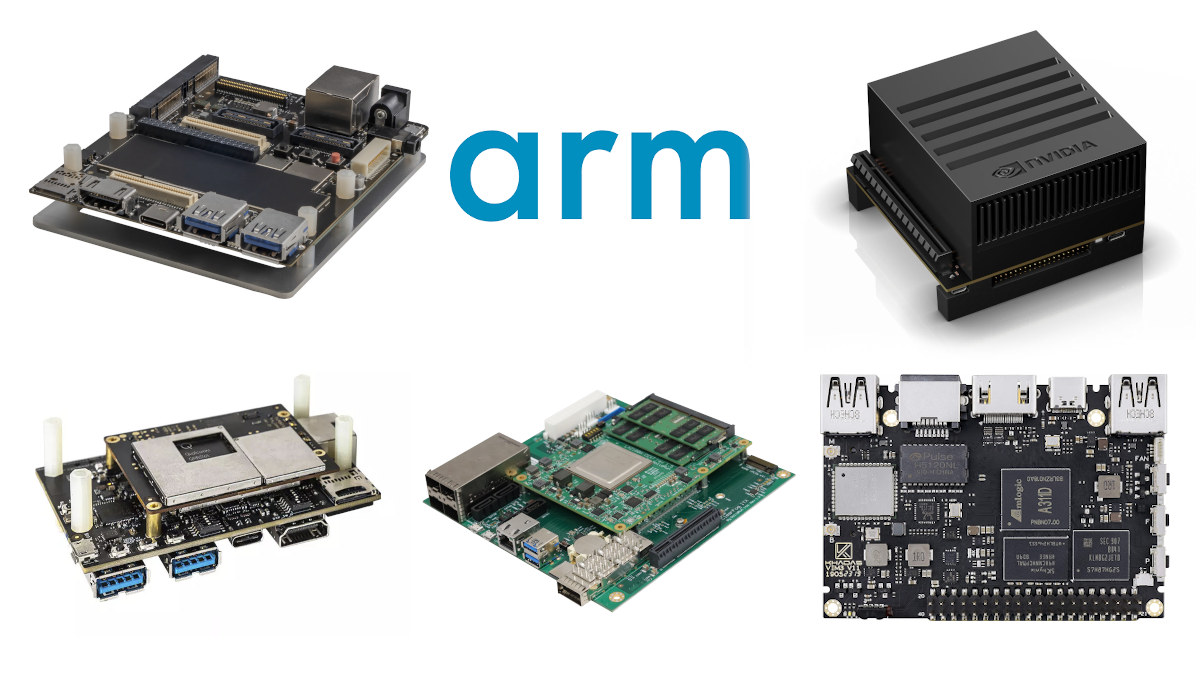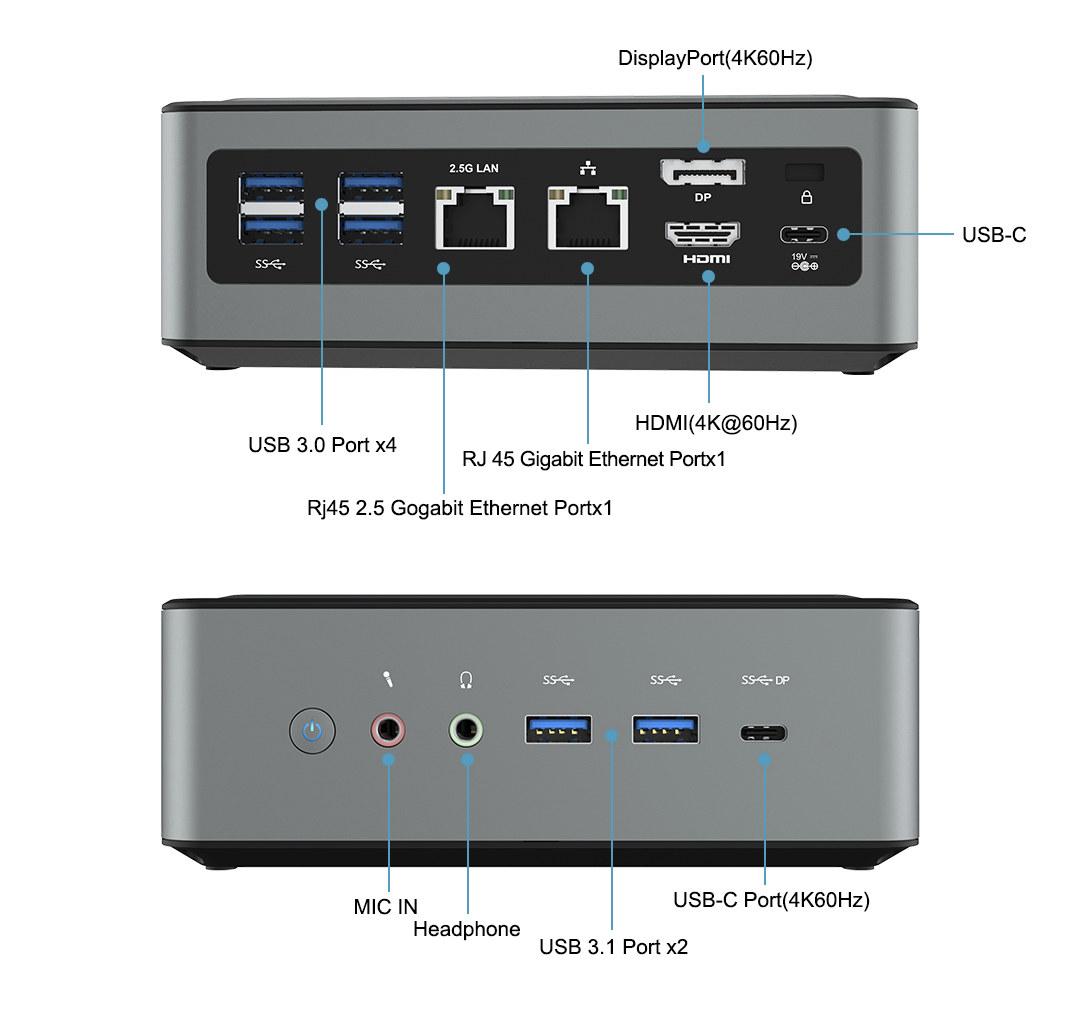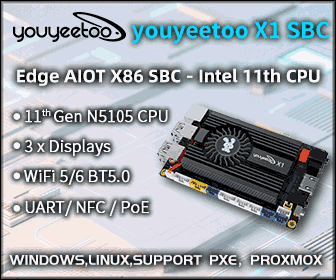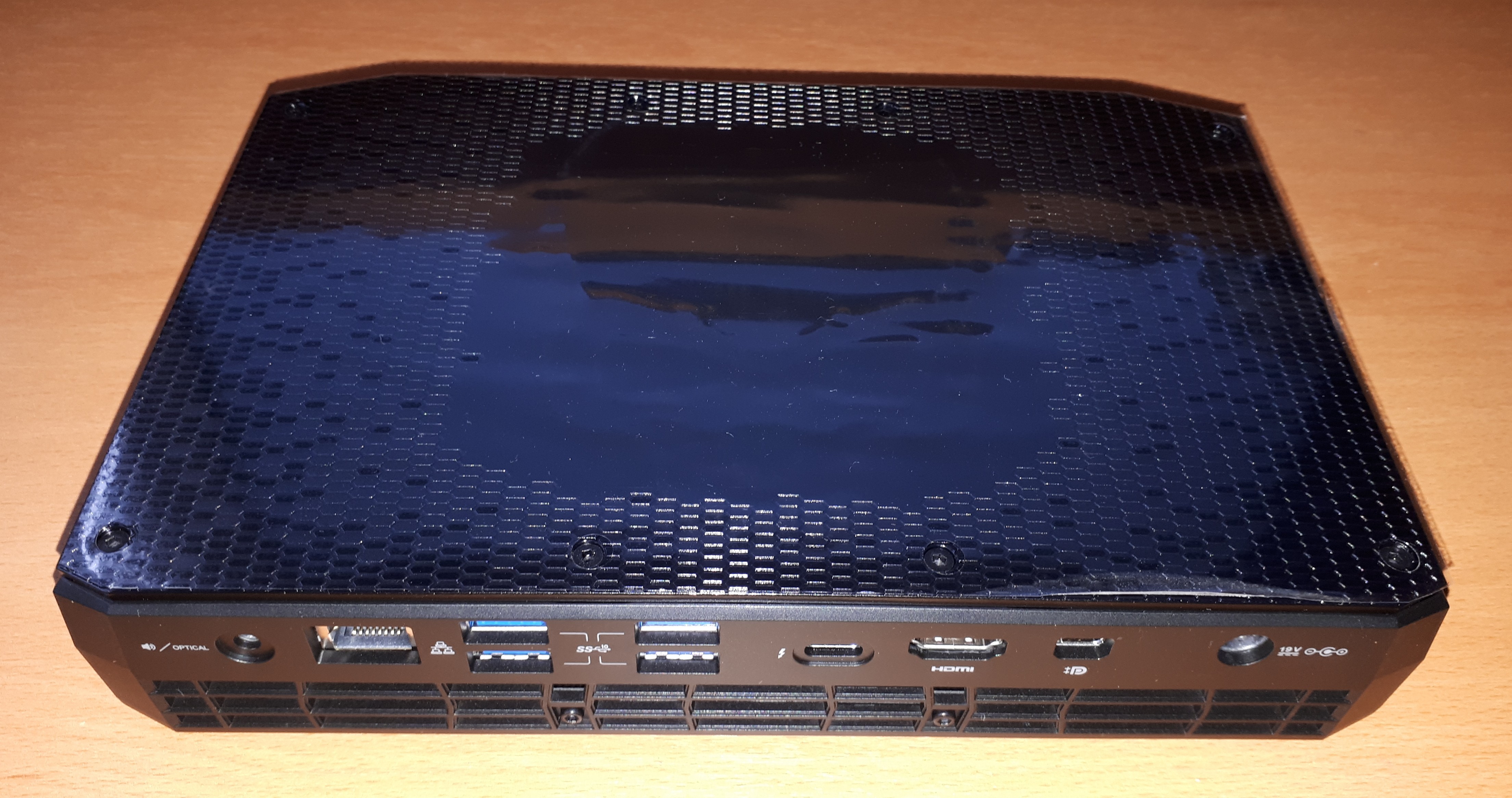We’ve covered a fair amount of compact Arduino Zero compatible boards based on SAMD21 Cortex-M0+ microcontroller over the years including Exen Proto, Wemos D1 SAMD21, or Seeeduino XIAO with the latter being the smallest of them all at just 23.5 x 17.5 mm. All those boards come with a USB port (Micro USB or USB-C) by default that makes it easy to work with, but may not be ideal to integrate into projects or final products. That may be why Hamish Morley designed the Minima Arduino Zero compatible module with a size even smaller than the XIAO board at 19.8 x 16.6 mm, and the USB interface exposed through 4 pads instead of a connector. Minima specifications: Microchip SAMD21G18A 32-bit Arm Cortex-M0+ microcontroller @ 48 MHz with 256KB of flash storage, and 32KB of SRAM Expansion – 24x castellated pads (2.54mm pitch) with 18 GPIO pins, including 5x analogue capable, […]
Board::mini development tools offer a complete Vehicle-Hacking Platform (Crowdfunding)
If you are looking to connect to a vehicle’s CAN bus, then the newly launched open-source board::mini development tools include a board and expansion boards that will aid your application. BMC labs have introduced a development board based on the STM32 MCU and supporting expansion boards to increase the capabilities of the baseboard via a crowdfunding project. As mentioned earlier, the board:mini base development board features an STM32 MCU at its heart and comes with a CAN transceiver. For those who do not know what a CAN transceiver is, it just transmits and detects data on the CAN bus. The board:mini project also includes three expansion boards designed to fit on top of the base development board. The bmc::board project was born to produce development tools appropriate for both field- and industrial-prototyping work. These boards were not designed to sit on a workbench. We ourselves have a habit of strapping […]
Raspberry Pi CM4 based predictive maintenance gateway features Google Coral Edge AI accelerator
Techbase had already integrated the Raspberry Pi CM4 module into several industrial products including Modberry 500 CM4 DIN Rail industrial computer, ModBerry AI GATEWAY 9500-CM4 with a Google Edge TPU, and ClusBerry 9500-CM4 that combines several Raspberry Pi CM4 modules into a DIN Rail mountable system. The company has now announced another Raspberry Pi Compute Module 4 gateway – iModGATE-AI – specially designed for failure monitoring and predictive maintenance of IoT installations, which also embeds a Google Coral Edge TPU AI module to accelerate computer vision. iModGATE-AI gateway specifications: SoM – Raspberry Pi Compute Module 4 with up to 32GB eMMC AI accelerator – Google Coral Edge TPU AI module Video Output – HDMI port Connectivity – Gigabit Ethernet USB – USB 2.0 port Sensors – 9-axis motion tracking module with 3-axis gyroscope with Programmable FSR, 3-axis accelerometer with Programmable FSR, 3-axis compass (magnetometer) Expansion 2x 16-pin block terminal Advanced […]
Top 5 most powerful Arm SBC’s & Devkits in 2021
While companies like Hardkernel, Raspberry Pi, Orange Pi, and FriendlyArm offers affordable, great little Arm Linux development boards that are suitable for many projects, in some cases, your requirements may lead you to spend a bit more for either extra CPU power, more memory, AI processing power, faster I/Os and so on. That’s why I did a list of the most powerful Arm single board computers in late 2017, but with over three years passed since then an update is warranted. The boards from the list must be easily purchasable from individuals (with the cash to spare) or small companies, so we’ll exclude hard-to-source hardware, as well as Arm server boards like Ampere eMAG motherboard, that do not really qualify as single board computers. Snapdragon 888 Mobile Hardware Development Kit While there are plenty of Cortex-A72/A73 development boards around, it’s much hardware to find one with more recent Cortex-X1 or […]
AMD Ryzen 5 4500U Mini PC offers triple 4K display support, 2.5GbE
AMD Ryzen 4000-U series 15W processors were announced in January 2020, and by the end of the year, we covered some mini PCs with Ryzen 3/5/7 processors from the new family with products such as ASRock Mars 4000U and ASROCK 4X4 BOX-4800U. MINISFORUM has now announced its own Ryzen 4000-U series mini PC with MINIXFORUM HM50 mini PC powered by an AMD Ryzen 5 4500U hexa-core processor that offers three 4K display output ports (HDMI, DP, and USB-C), as well a 2.5GbE and Gigabit Ethernet ports, six USB 3.0/3.1 ports and more. MINISFORUM DeskMini HM50 mini PC specifications: SoC – AMD Ryzen 5 4500U hexa-core/hexa-thread processor @ 2.3 GHz / 4.0 GHz (Turbo), with 6-core Radeon graphics @ 1.5 Hz, 11MB cache, 15W TDP (cTDP: 10-25W) System Memory – 2x DDR4 SODIMM sockets (fitted with 2x 8GB RAM modules, but upgradable up to 2x 32GB) Storage – 256GB or 512GB […]
Experiment with neurostimulation using NeuroStimDuino Arduino shield (Crowdfunding)
Neuralaxy’s NeuroStimDuino is an open-source Arduino shield that allows students, researchers, and hobbyists to study the effects of neurostimulation on muscle contraction easily and cheaply. What is Neurostimulation exactly? It works by applying short electrical pulses to the surface of the skin for the purpose of stimulating the underlying nerves and muscles. Neurostimulation has several uses including a treatment called Functional Electrical Stimulation (FES) therapy to help restore mobility in the paralyzed limb muscles of stroke victims and those who have suffered spinal cord injuries, and studies are being carried out to better understand how it can be leveraged for pain reduction and sensory feedback. NeuroStimDuino hardware specifications: MCU – Microchip dsPIC33F 16-bit microcontroller (40 MIPS) with 256 KB flash memory Two independent 2mm output jack per board with: Adjustable current output range – +/- 25 mA, resolution 250 µA/step Adjustable stimulation frequency range – 1 – 100 Hz, pulse-width […]
Linux and Memory Performance on an Intel NUC 11 Enthusiast Phantom Canyon NUC11PHKi7C
I’ve already looked at Windows performance on the NUC11PHKi7C Enthusiast Phantom Canyon which is Intel’s latest NUC 11 flagship product specifically targeting gamers as it includes an NVIDIA RTX 2060 GPU. Now it is the turn of Linux and like before I will compare performance against Intel’s previous NUC with a discrete GPU: the NUC 9 Extreme Ghost Canyon. I will also briefly revisit Windows performance by looking at the impact of using 3200MHz memory as opposed to the 2400MHz used during the previous review. Hardware Overview As a reminder, the NUC11PHKi7C physically consists of a 221 x 142 x 42 mm (8.70 x 5.59 x 1.65 inches) rectangular plastic case. It is an actively cooled mini PC and uses Intel’s 10 nm Core i7-1165G7 Tiger Lake processor which is a quad-core 8-thread 2.80 GHz processor boosting to 4.70 GHz with Intel’s Iris Xe Graphics and the NUC also includes […]
Tiny Tri-color E-Ink display for Wemos D1 Mini board sells for $10
Wemos D1 Mini is one of my favorites ESP8266 boards with a cheap price, tiny form factor, and support for stackable expansion boards. Lolin has now launched a small 2.13-inch tri-color E-Ink display that is compatible with D1 mini, D1 mini Pro, and D32 Pro boards, and sells for just $9.90 plus shipping. Specifications: 2.13-inchTri-Color (red/black/white) ePaper/e-Ink display with 212×104 resolution Driver IC – Good Display UC8151D Connection to D1 mini, D1 mini Pro, D32 Pro via 10-pin connector Debugging – 8-pin unpopulated header with EPD signals (SPI, Reset, Busy…) 3.3V, GND You may wonder why the PCB reads “2.13 INCH e-Paper 250×122”, while the resolution is 212×104. That’s because the company probably reused the PCB from their 2.13-inch black and white e-Paper display with 250×122 resolution (IL3897 driver). The display can be programmed with Arduino using LOLIN_EPD, Adafruit_GFX, and Adafruit_BusIO libraries as explained in the Wiki. You’ll find three […]


